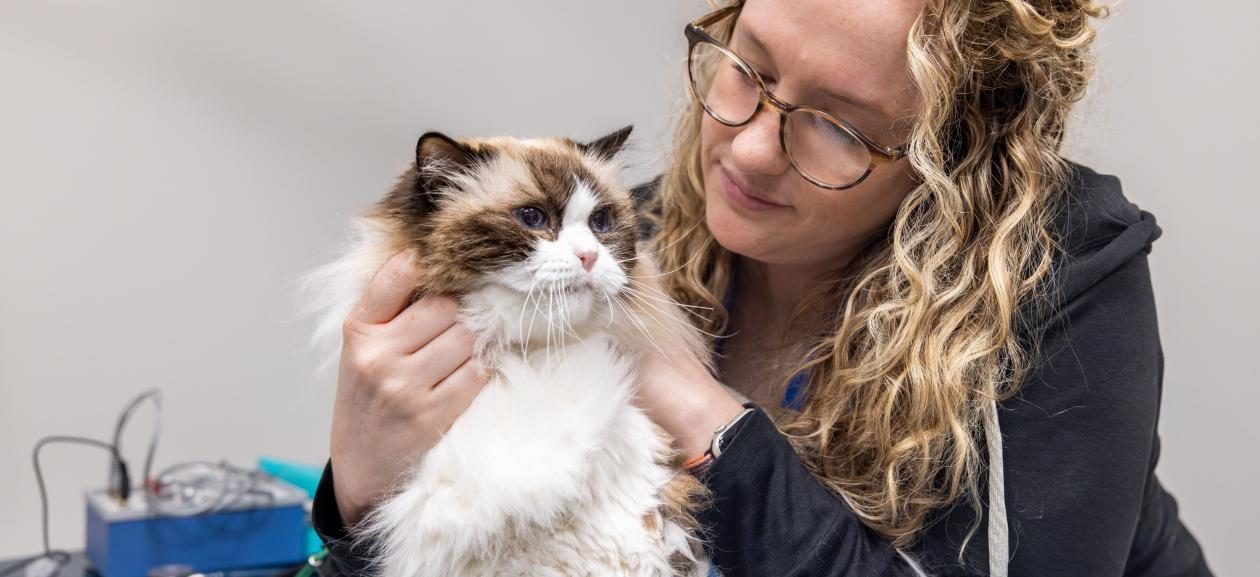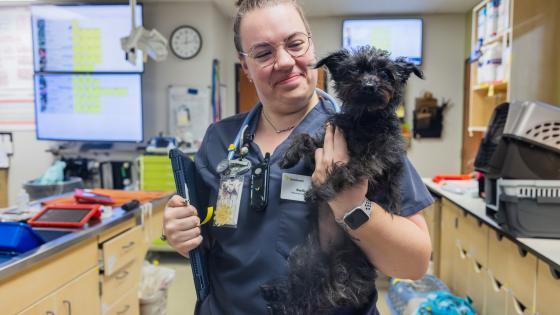
Cancer Treatment for Pets: A Guide to Chemotherapy
Imagine your pet still enjoying walks, snuggles, and their favorite treats—even while undergoing cancer treatment. Many pets tolerate chemotherapy far better than most people expect. Veterinary oncology is designed not only to fight the disease but also to prioritize your companion’s comfort, happiness, and quality of life throughout the process.
What Is Chemotherapy?
Chemotherapy uses medications that slow down or destroy rapidly dividing cells—like cancer cells. While the word “chemotherapy” can sound intimidating, in veterinary medicine it’s often gentler than people expect. Treatments can be given by injection, orally (as a pill or capsule), or occasionally through other methods depending on your pet’s specific type of cancer. Every plan is tailored to your pet, with comfort and well-being always at the center of care.
These medications can help slow or stop cancer growth, shrink tumors, or manage the disease over time. Sometimes chemotherapy is used after surgery to prevent cancer from returning; other times, it’s used for cancers that can’t be surgically removed.
How Veterinary Chemo Differs from Human Chemo
When people think of chemotherapy, they often imagine harsh side effects in human patients. Veterinary chemotherapy is different. The focus is on quality of life, not maximum dosage. Veterinarians use lower doses and gentler protocols, so pets generally don’t get as sick as humans often do. Most continue to eat, play, and enjoy their normal routines throughout treatment.
The Chemotherapy Process
Every pet’s treatment plan is unique, based on their diagnosis, size, and overall health. Here’s what the process typically looks like:
- Initial Consultation: You’ll meet with a veterinary oncologist to review your pet’s test results and discuss treatment options. Together, you’ll create a protocol—a personalized plan designed around your pet’s needs and your goals.
- Treatment Sessions: Chemotherapy is usually given in a series of treatments, called cycles, over several weeks or months. On treatment days, most pets spend only a few hours at the hospital. The oncology team checks vital signs, runs lab work if needed, and administers the chemotherapy—through an injection, IV drip, or oral medication depending on the plan. Most pets don’t need sedation and are kept comfortable throughout. Once the treatment is complete, your pet can go home the same day, often ready for dinner and their usual routine.
- Monitoring: Between treatments, your veterinary team tracks your pet’s bloodwork and overall health to ensure the medication is effective and that your pet is feeling well.
- Adjustments: Doses or schedules can be modified anytime to minimize side effects or respond to how your pet and their cancer are doing.
Possible Side Effects
Most pets feel just like themselves during chemotherapy, and side effects—if they occur—are usually mild and short-lived. Because chemotherapy affects fast-growing cells, a few temporary changes can happen:
- Mild gastrointestinal upset: Your pet might have a brief dip in appetite, a little nausea, or softer stools for a day or two.
- Fatigue: Some pets rest more after treatment, then bounce back quickly.
- Lowered white blood cells: Slightly higher infection risk, which is why bloodwork is monitored closely.
- Subtle hair changes: Most pets don’t lose fur, though certain breeds (like Poodles or Terriers) may see minor thinning, and cats may lose a few whiskers.
If side effects do appear, your oncology team can adjust treatment or provide medications to keep your pet comfortable. Most pets continue enjoying meals, walks, and snuggle time throughout chemotherapy.
Helping Your Pet During Treatment
Supporting your pet at home can make a big difference. Even small gestures help them feel safe and loved:
- Keep a consistent routine: Familiarity helps reduce stress.
- Monitor their habits: Watch appetite, energy, and bathroom habits, and report changes to your vet.
- Offer affection and patience: Your calm presence and gentle touch go a long way.
A Compassionate Approach to Cancer Care
Modern veterinary oncology isn’t just about fighting cancer—it’s about helping pets live well for as long as possible. Many dogs and cats receiving chemotherapy continue to enjoy walks, cuddles, and their favorite treats between visits.
If your pet is facing cancer, you’re not alone. Your veterinary team will guide you every step of the way, making sure your companion’s comfort and happiness always come first.
At DoveLewis, our dedicated oncology team is committed to creating personalized treatment plans that balance effective cancer care with quality of life. We’re here to answer your questions, support you, and ensure your furry family member feels safe, loved, and cared for throughout their journey.
Recent Posts
Top Winter Care Tips for Your Pets
When you normally think of weather safety with your pets, you may naturally think of leaving animals in hot cars during summer. But did you know that cold weather also poses a serious threat to your animal's wellbeing?



